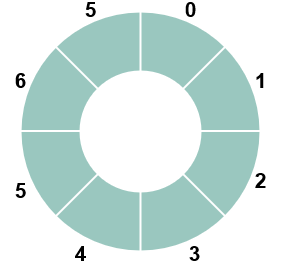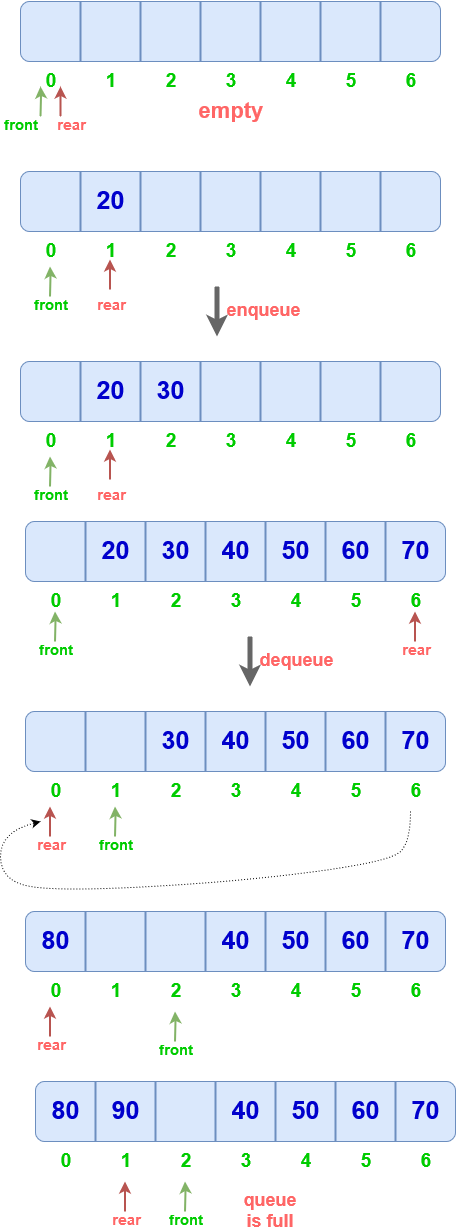Circular Queue Data Structure
Circular Queue
Circular queue is a modified form of queue in which the front and rear pointers move circularly.
Instead of starting from -1, now front and rear start from 0.
Representation of circular queue:

class Queue{
int arr[50]
int front, rear;
int size;
};
Queue(int n)
{
front = 0;
rear = 0;
size =n;
}
Operations
To make front and rear move circularly, after rear reaches (size-1 ) position, it must be reset to 0.
To do this, ‘%’ is used.
Working of mod operator can be seen:
Let size = 5.
| Rear = | (Rear+1)%size |
|:–:|:–:|
| 0 | (0+1)%7 = 1 |
| 1 | (1+1)%7 =2|
| 2 | (2+1)%7 =3|
| : | : |
| 4 | (4+1)%5 =0 |
Hence when rear points to (size-1), it gets reset to 0.
Working of circular queue :

Enqueue
- Elements are inserted from the rear end as usual.
- If rear reaches (size-1), it is reset to zero
- Insertion can’t be done at the index where front is pointing
Only (size-1) spaces can be utilized in Circular queue.
void enqueue(int x)
{
if((rear+1)%size == front)
print("Queue is Full");
else
{
rear=(rear+1)%size;
arr[rear]=x;
}
}
Dequeue
int dequeue()
{
int x=-1;
if(front==rear)
print("Queue is Empty")
else
{
front=(front+1)%size;
x=arr[front];
}
return x;
}
Display
void Display()
{ int i= front+1;
do
{
print(arr[i]);
i=(i+1)%size;
}while(i!=(rear+1)%size);
}
Complexity for all operations on circular queue is O(1).